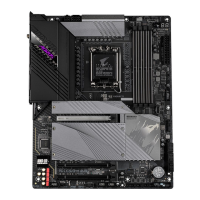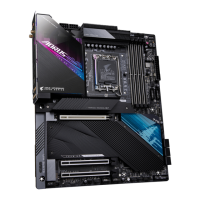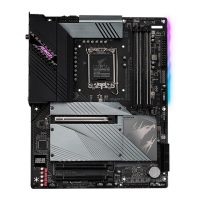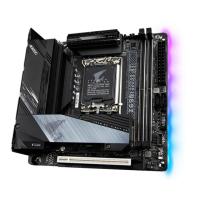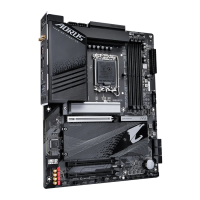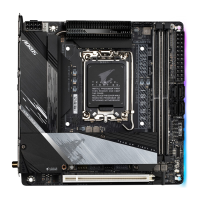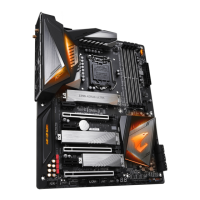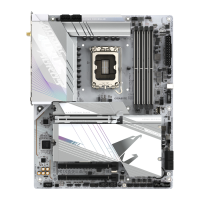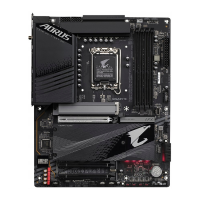Do you have a question about the Gigabyte AORUS Z690 and is the answer not in the manual?
Frequently asked questions covering overclocking basics and CPU comparability for beginners.
Navigating the system BIOS interface to begin overclocking configuration.
Enabling Extreme Memory Profile (XMP) for optimal RAM performance.
Modifying the CPU clock ratio for increased frequency.
Turning off TVB to prevent unwanted CPU frequency throttling.
Configuring the CPU ring frequency for potential performance gains.
Adjusting CPU Vcore voltage for stable overclocking.
Detailed adjustment of CPU Vcore for stable overclocking.
Saving the current overclock settings as a BIOS profile.
Applying all saved BIOS settings and rebooting the system.
An overview of the process for testing overclocked system stability.
Setting up Prime95 with appropriate test parameters for CPU stress testing.
Using monitoring tools like Hwinfo64 to track CPU load and temperature.
Methods to resolve instability issues encountered during stress testing.
Confirming the successful and stable overclocked state of the CPU.
Utilizing the DDR5 Auto Booster for enhanced memory performance.
Selecting and applying predefined XMP profiles for DDR5 memory.
Creating and saving custom SPD profiles for DDR5 memory.
Frequently asked questions covering overclocking basics and CPU comparability for beginners.
Navigating the system BIOS interface to begin overclocking configuration.
Enabling Extreme Memory Profile (XMP) for optimal RAM performance.
Modifying the CPU clock ratio for increased frequency.
Turning off TVB to prevent unwanted CPU frequency throttling.
Configuring the CPU ring frequency for potential performance gains.
Adjusting CPU Vcore voltage for stable overclocking.
Detailed adjustment of CPU Vcore for stable overclocking.
Saving the current overclock settings as a BIOS profile.
Applying all saved BIOS settings and rebooting the system.
An overview of the process for testing overclocked system stability.
Setting up Prime95 with appropriate test parameters for CPU stress testing.
Using monitoring tools like Hwinfo64 to track CPU load and temperature.
Methods to resolve instability issues encountered during stress testing.
Confirming the successful and stable overclocked state of the CPU.
Utilizing the DDR5 Auto Booster for enhanced memory performance.
Selecting and applying predefined XMP profiles for DDR5 memory.
Creating and saving custom SPD profiles for DDR5 memory.
| Chipset | Intel Z690 |
|---|---|
| CPU Socket | LGA 1700 |
| Form Factor | ATX |
| Memory Type | DDR5 |
| Maximum Memory | 128 GB |
| Memory Slots | 4 |
| PCIe 5.0 x16 Slots | 1 |
| PCIe 4.0 x16 Slots | 1 |
| M.2 Slots | 4 |
| SATA 6Gb/s Ports | 6 |
| USB 3.2 Gen 2x2 Ports | 1 |
| USB 3.2 Gen 2 Ports | 5 |
| USB 3.2 Gen 1 Ports | 4 |
| USB 2.0 Ports | 4 |
| Bluetooth | Bluetooth 5.2 |
| Wi-Fi | Wi-Fi 6E |
| RGB Headers | 2x Addressable, 2x RGB |
| Network | 2.5GbE LAN |
